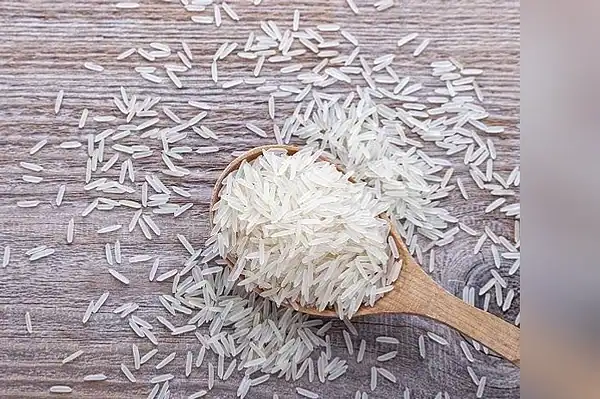Global rice markets in August 2025 have entered a period of high volatility, as major trade policy shifts and shifting demand patterns disrupt traditional flows. The spotlight is firmly on India’s basmati sector, which faces substantial headwinds following a sharp increase in US import duties. In the first four months of this fiscal year, Indian basmati exports to the US plummeted from over 90,000 tonnes to just 78,000 tonnes. This decline is set to accelerate after the US raised tariffs from 25% to 50% at the end of August—a move that severely erodes Indian basmati’s competitiveness, likely shifting demand toward Pakistani rice and squeezing Indian exporters’ margins. The leading Indian brands in the US, including LT Foods and Ebro India, now face the immediate challenge of seeking value-driven alternative markets, particularly in China, where trade data show rising imports of Indian basmati but still well below US levels.
Amid these disruptions, India’s exporters are attempting to minimize losses by actively targeting China, the Gulf, and Iran. However, observers caution that unless these efforts scale up swiftly, Pakistan—offering basmati at a lower 19% duty in the US—stands to gain most. Meanwhile, global rice price trends are mixed: Indian FOB basmati, sella, and steam quotes are slightly down week-on-week, reflecting cautious buying and heightened market uncertainty. Strategic diversification and weather outcomes in Asia’s main rice belts will be decisive for short-term direction.
Exclusive Offers on CMBroker

Rice
all golden, sella
FOB 1.00 €/kg
(from IN)

Rice
all steam, pr11
FOB 0.50 €/kg
(from IN)

Rice
al ısteam, sharbati
FOB 0.65 €/kg
(from IN)
📈 Rice Prices at a Glance
| Type | Origin | Location | FOB Price (EUR/kg) | Previous (EUR/kg) | Weekly Change | Sentiment |
|---|---|---|---|---|---|---|
| All Golden, Sella | IN | New Delhi | 1.05 | 1.06 | -0.9% | Bearish |
| All Steam, PR11 | IN | New Delhi | 0.56 | 0.57 | -1.8% | Bearish |
| Al Isteam, Sharbati | IN | New Delhi | 0.71 | 0.72 | -1.4% | Bearish |
🌍 Supply & Demand Drivers
- US Tariffs: US duties on Indian basmati now 50% (from 25%), likely reducing Indian share in the market and improving Pakistan’s position (19% duty for Pakistani basmati).
- Changing Export Destinations: Indian exporters look to offset US demand shortfall by expanding into China (imports up to 5,834 tonnes this year) and maintaining strong sales to Gulf states.
- Price Realisation: US remains most lucrative (average $1,230/tonne), followed by China ($1,095), Saudi Arabia ($1,025), and Iran ($881).
- Global Shift: Pakistan is likely to benefit from redirected US demand, while overall global trade flows are unsettled.
📊 Fundamentals & Market Context
- Basmati’s Share: India exported 274,213 tonnes basmati to the US last year (4.5% of 6.07 million total). Basmati is 30% of India’s total rice exports.
- Key Markets: Saudi Arabia (1.17 million t, $1.12B), Iraq & Iran (1.76 million t, $1.6B).
- Historical Context: Market is adapting to geopolitical risk and more diversified export focus due to US pressure.
☁️ Weather Outlook & Crop Impact
- India: Monsoon rainfall in northern India is average to below-average for August 2025. Timely showers in Punjab and Haryana have supported basmati crop health, but some areas reported late sowing and patchy moisture stress.
- Vietnam & Pakistan: Vietnam’s Mekong Delta sees adequate rainfall; crop development is normal. Pakistan’s Punjab has favorable conditions but potential heat stress risk in coming weeks.
- Impact: Normal production is expected, but localized weather extremes may impact yields, particularly if dry conditions persist in parts of northern India.
🌐 Global Production & Stock Snapshot
| Country | 2024/25 Production (Mt) | 2024/25 Exports (Mt) | 2024/25 Stocks (Mt) |
|---|---|---|---|
| India | 128.5 | 20.0 | 31.0 |
| Vietnam | 44.2 | 7.7 | 3.1 |
| Paksitan | 9.6 | 4.7 | 0.9 |
| Thailand | 19.7 | 8.6 | 5.5 |
| US | 7.1 | 2.6 | 1.6 |
| China | 147.5 | 2.7 | 103.8 |
📆 Trading Outlook & Recommendations
- Sellers: Indian exporters should prioritize market diversification (esp. China, Middle East); avoid discounting into a weak US market.
- Buyers: Consider Pakistan basmati as a lower-duty alternative in the US market. Watch for price corrections in premium Indian varieties.
- Positioning: Monitor speculative activity and trade policy changes—particularly in the US and Gulf markets.
- Weather: Keep an eye on late monsoon developments in northern India and potential crop stress in Pakistan.
- Short-term Sentiment: Bearish to neutral as markets adjust to new trade dynamics; possible price stabilization if India succeeds in finding alternative buyers.
⏩ 3-Day Regional Price Forecast
| Type | Origin | Location | Forecast Range (EUR/kg) |
|---|---|---|---|
| All Golden, Sella | IN | New Delhi | 1.04 – 1.07 |
| All Steam, PR11 | IN | New Delhi | 0.55 – 0.57 |
| Al Isteam, Sharbati | IN | New Delhi | 0.70 – 0.72 |
| Long White 5% | VN | Hanoi | 0.61 – 0.63 |
Outlook: Near-term price pressure persists as Indian sellers shift focus beyond the US. Monitoring of crop development and policy is advised to anticipate further moves.


